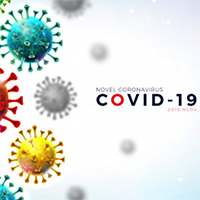 Smart Citations
Smart CitationsSee how this article has been cited at scite.ai
scite shows how a scientific paper has been cited by providing the context of the citation, a classification describing whether it supports, mentions, or contrasts the cited claim, and a label indicating in which section the citation was made.
Bronchoscopy in COVID-19 patients: When, how and why. Experience in clinical practice

Accepted: February 8, 2021
All claims expressed in this article are solely those of the authors and do not necessarily represent those of their affiliated organizations, or those of the publisher, the editors and the reviewers. Any product that may be evaluated in this article or claim that may be made by its manufacturer is not guaranteed or endorsed by the publisher.
Severe Acute Respiratory Syndrome due to Coronavirus-19 (SARS-CoV-2) is caused by combined alveolar-capillary lung damage, with bilateral pneumonia and thrombosis, which often causes respiratory failure. Proper COVID-19 management requires high skills in airway control and the need to perform aerosol-generating procedures such as bronchoscopy, which can increase the possibility of virus spreading among healthcare professionals. In an epidemiologically delicate moment, the multidisciplinary decision on “WHEN, HOW and WHY†to perform bronchoscopies minimizing the risk of COVID-19 transmission, represented a great challenge for all specialists engaged in bronchoscopic procedures. In this work authors want to share all technical aspects of 87 videobronchoscopies performed in confirmed or suspected COVID-19 patients, from 3rd to 6th January 2020, describing the reason, the organizational and operational model and patients characteristics. Was also evaluated the impact of high-risk procedures such as bronchoscopy on the personnel involved. The disclosure of all technical details, represents, in the opinion of the authors, an important contribution, capable of providing support to all physicians engaged in bronchoscopy procedures in confirmed or suspected COVID-19 patients.
How to Cite

This work is licensed under a Creative Commons Attribution-NonCommercial 4.0 International License.
PAGEPress has chosen to apply the Creative Commons Attribution NonCommercial 4.0 International License (CC BY-NC 4.0) to all manuscripts to be published.

 https://doi.org/10.4081/monaldi.2021.1744
https://doi.org/10.4081/monaldi.2021.1744




